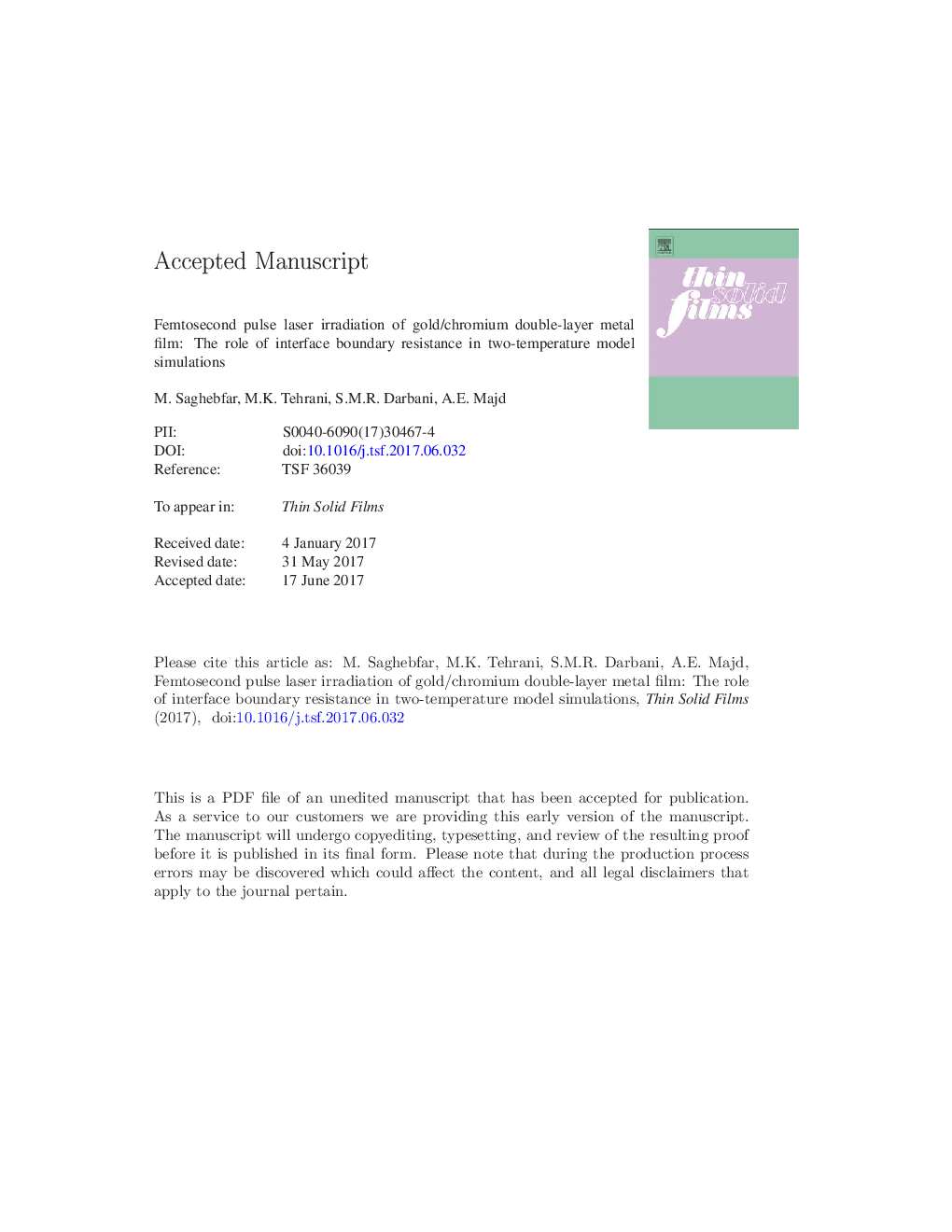| Article ID | Journal | Published Year | Pages | File Type |
|---|---|---|---|---|
| 5466044 | Thin Solid Films | 2017 | 20 Pages |
Abstract
In this work, the results of computational single-shot laser pulse irradiation of gold/chromium metal film using two-temperature model are presented. The optical properties of first Au layer are studied based on critical point model and temperature-dependent reflectivity and absorption coefficient are considered in model simulations with and without the effect of ballistic motion of hot electrons. The thermal response of Au/Cr double-layer film is investigated after femtosecond laser pulse irradiation with pulse duration 30Â fs and 800Â nm laser wavelength in submelting condition by introducing the influence of thermal boundary resistance. First, the ideal interface between gold and chromium is considered and the two-temperature model results for various thicknesses of gold layer are demonstrated. Then, the time and position dependence of interface resistance is calculated based on Diffuse Mismatch Model. By including the thermal boundary resistance at interface, the electron and lattice temperature distributions and the lattice overheating from chromium side are compared with the ideal interface. The results show that, in the presence of Kapitza resistance, the chromium side lattice overheating at interface is lower than the case of zero interface boundary resistance. Moreover, the two-temperature model simulations for various snapshot times and heat flow distribution for Au/Cr double-layer structure are studied. The simulated results provide more information about femtosecond laser irradiation for double-layer metal films.
Related Topics
Physical Sciences and Engineering
Materials Science
Nanotechnology
Authors
M. Saghebfar, M.K. Tehrani, S.M.R. Darbani, A.E. Majd,
